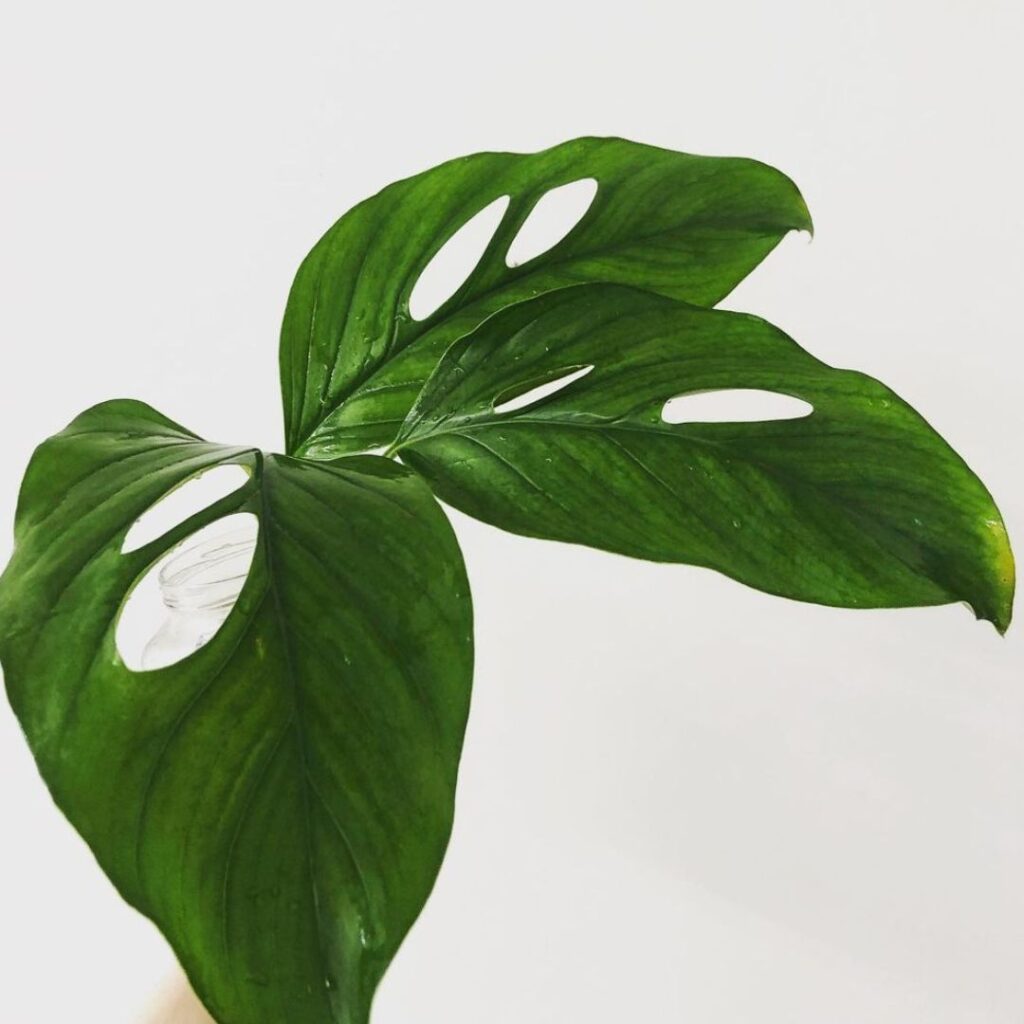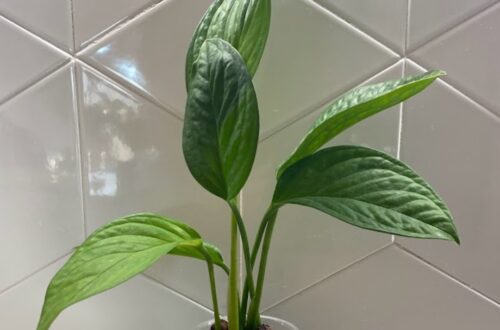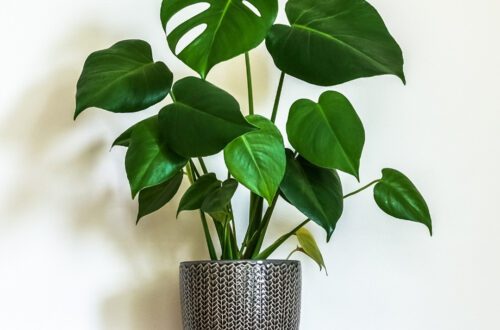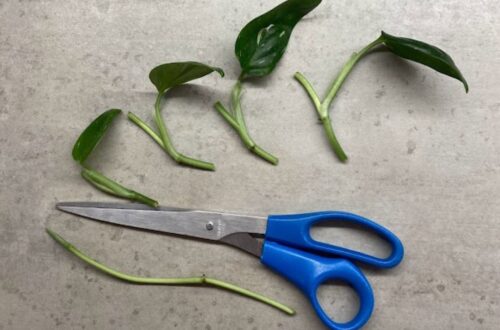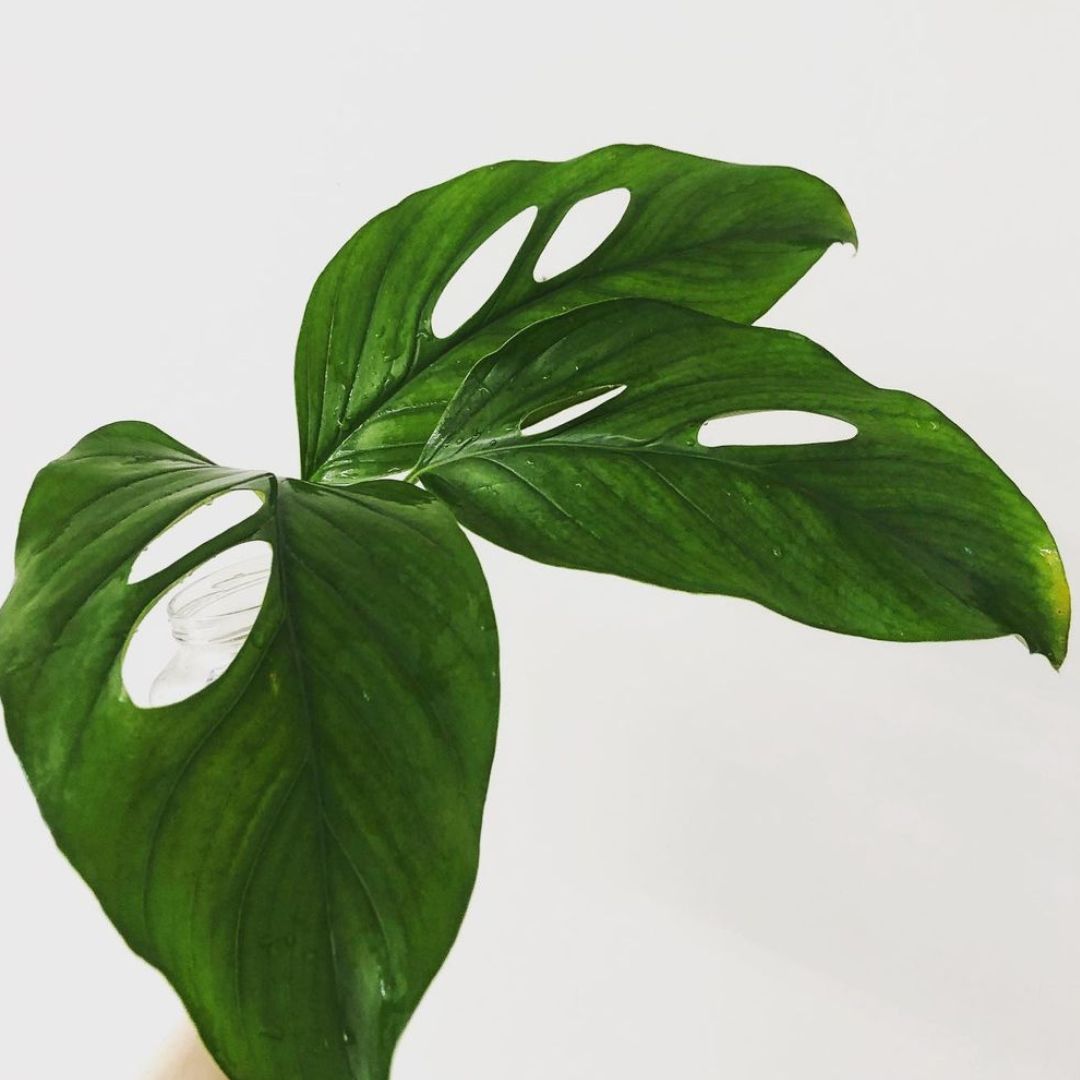
Monstera Acacoyaguensis
This green, semi-leathery, glossy Monstera Acacoyaguensis develops huge leaves with a gorgeous array of fenestrations, we cover all you need to know about care and propagation..
Monstera Acacoyaguensis Care Summary
| Light needs: | Bright indirect sunlight. |
| Watering needs: | Check it once a week and water it if the top 25% of the soil is dry. |
| Fertilizer: | A balanced feed monthly in spring and summer. |
| Soil: | A well draining mix with perlite. |
| Humidity: | 50% or more. |
| Temperature: | 21-27°C (70-80°F). |
| Where to buy: | Try our list of Rare Plant Shops. |
| Other names: | Adansonii Acacoyaguensis. |
| Common issues: | Over and under watering. |
Introduction
The Monstera Acacoyaguensis sports magnificently fenestrated green foliage. The leaves can reach up to 33 inches (85 cm) long and 18 inches (45 cm) wide. This is a vining plant that will climb up trees in the wild, so providing it with a moss pole will result in larger, more fenestrated leaves. This plant is native to Belize, Guatemala, and Mexico and is an uncommon or rarely found plant.
See also: Monstera Soil, Monstera Trellis, Monstera Laniata Care, Monstera Trellis, Monstera Pinnatipartita Care, Monstera Subpinnata Care.
Monstera Acacoyaguensis Light Needs
Bright indirect light from an east or west-facing window will be perfect for this Monstera. If you keep it in a location with medium or lower light levels, you may not see much fenestration show up on your monstera. This is because the plant needs as much surface area as possible to soak up the rays. Around 10 hours or a bit more a day of sunlight will be the perfect amount. If you choose to use a grow light, make sure that it is labeled as a full spectrum light. To get those iconic fenestrations, go for a high quality light.
How Often To Water
Check it once a week and water it if the top 25% of the soil is dry. Monstera Acacoyaguensis likes soil on the wetter side. The soil must stay moist for this plant to thrive. Only water when the top inch of soil begins to dry out. This could mean watering it around once a week. However, this will vary widely depending on how large the pot you keep it in is. Don’t water on a set schedule. Instead, feel the soil every so often and go by this instead.
Fertilizer
Acacoyaguensis will love you if you provide it with lots of fertilizer. This is a hungry plant. The best way to do so will be to make sure that you pot it in rich soil with plenty of organic matter, worm castings for example. You can also provide an extra 20-20-20 fertilizer during the growing season, around once a month. The best fertilizer will be one that is water soluble.
Tip: I like to keep plants like this on a moss pole as they ten to grow bigger and fuller leaves as well as encouraging more fenestrations.
Soil
The best soil for the Monstera Acacoyaguensis is one that holds a bit of moisture, but is well draining enough so that it does not get waterlogged roots. For this mixture, not as much orchid bark or perlite will be needed. The plant will also enjoy a soil that has lots of nutrients. However, always ensure that your potting mix is not too dense. Additives like sphagnum moss will leave some room for air while also holding onto moisture. You can use only peat moss for your soil. Or, you can use regular potting soil with added compost or organic fertilizer plus sphagnum moss and orchid bark. The end mixture should be rich but not too dense.
For more on buying or making your own soil, see our guide here: Monstera Soil.
When to Repot
The Monstera Acacoyaguensis is a medium speed grower that should be repotted every couple of years. Since this Monstera is a vining plant, it does not need a large pot to establish a huge root system in. Only choose a new pot that is slightly larger than the old one. You’ll know you need to repot only if there are lots of roots exiting the drainage hole of the pot. The main reason you’ll want to repot this beauty is simply to give it fresh soil. Most of its root system will be latching onto the moss pole you provide it.
Monstera Acacoyaguensis Humidity
As with other tropical plants, the Monstera Acacoyaguensis enjoys higher humidity above 50%. It will certainly react with larger, healthy leaves if you are able to provide this level of humidity. Group all your tropical plants together and have a humidifier running in the center. This way, you’ll create your own micro-rainforest where all your humidity loving plants can thrive.
Tip: I would keep them at 50% humidity or more, they will thrive in 60-70% too. They are tropical houseplant after all!
Temperature
Since this is a tropical plant, do not expose your Acacoyaguensis to temperatures below 60 degrees fahrenheit (15 degrees celsius). The optimal temperature for these plants is between 70 and 80 degrees fahrenheit (21-27 degrees celsius).
How to Propagate Monstera Acacoyaguensis
The best time to propagate Monstera Acacoyaguensis is at the end of the growing season which is at the end of summer. Cut between the nodes and make sure you select a healthy cutting as this will ensure success. Let it dry out so that the wound callouses over, then root it in water or sphagnum moss for a month before potting it up into soil. Some people also air layer them.
monstera acacoyaguensis price
They are not supper expensive, there is a small rooted cutting on Etsy at the time of writing for 25 euros (approx 25 usd)
monstera acacoyaguensis vs adansonii
The acacoyaguensis has less holes when young buy as it matures gets lots more, the adansonii has more leaf than hole and the ratio is the same throughout it’s life. Also as the acacoyaguensis matures it gets a more wavy or even serrated leaf border, the adansonii does not.
monstera acacoyaguensis vs esqueleto
The esquelto has more hole-to-leaf ratio at maturity and bigger holes, but the acacoyaguensis has more holes in general. The esquelto has a normal leaf border, where as the acacoyaguensis has a wavy o serrated edge (when mature).
monstera acacoyaguensis USDA Zone
Zones 10b to 12
Other Names
The Monstera Acacoyaguensis is also referred to by its full name is Monstera Adansonii Acacoyaguensis. Other types of Adansonii are also called swiss cheese plants. If you wish to get the Acacoyaguensis, ensure that it is labeled as so.
Where To Buy
Try our list of Rare Plant Shops.
FAQ’s
- This Monstera is toxic to both humans and animals so be sure not to let your furry friends take a bite. Keep this plant in a safe place.
- The splits on Monstera plants are used to let light through to the leaves on the lower portion of the plant.
Monstera Acacoyaguensis Common Pests, Issues, and Treatments
If the leaves on your Monstera Acacoyaguensis are turning yellow, this could point to a few different issues. If you recently left your Monstera in direct sunlight, then this yellowing could be due to sunburn. Or, if many of the leaves start turning yellow at the ends, this could be due to the plant not receiving enough nutrients.
If the leaves are turning brown on the edges or a crispy brown, this is due to either too much water or too little. Make sure that you stay consistent with the timing of when you provide water. Only water when the top inch or so of soil is dry.
As with other Monsteras, the most common pests are spider mites, scale, and aphids. These can all be treated by spraying a diluted solution of neem oil across the plant, or by taking a q-tip dipped in rubbing alcohol to individually remove each insect.
Additional Resources
Links:
- More info on the Wikipedia page.
- More info on the Kew Gardens plant Page.
- More info on the RHS plant Page.
Other Articles You Might Like
There you have it, here ends our guide to this beautiful plant. You might also like our other articles: Monstera Soil, Monstera Laniata Care, Monstera Trellis, Monstera Pinnatipartita Care.
Please follow us on Instagram and Pinterest for regular plant updates and occasional plant giveaways.
